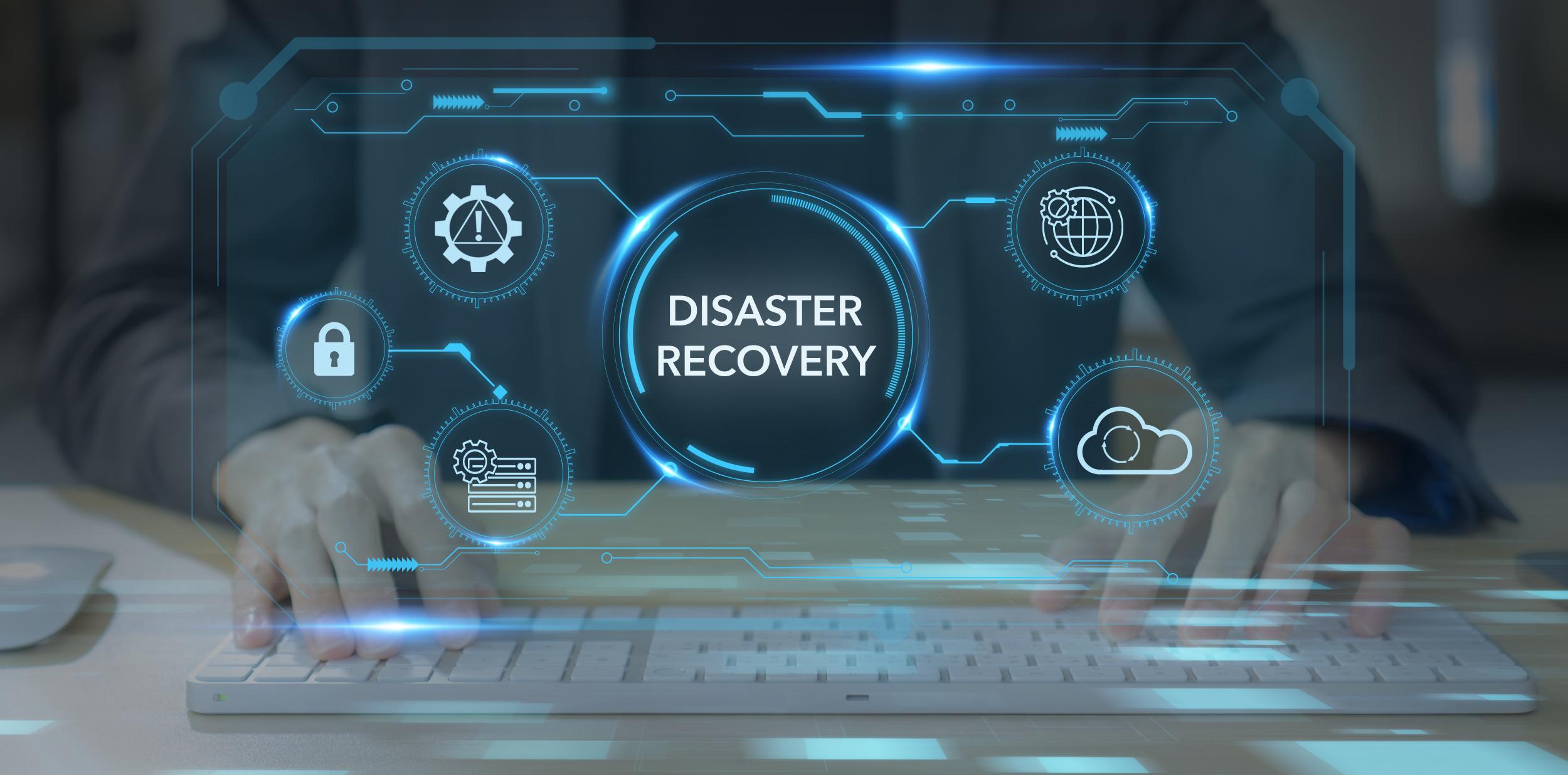5-MIN READ
What is an IT disaster recovery plan?
When technology fails, the clock starts ticking fast. Every moment your information systems are down, your business risks losing productivity and revenue.
But thankfully, with the right preparation, you can avoid potential chaos and keep everything afloat. This is where having a reliable IT plan steps up—something that helps you recover quickly and keeps operations running no matter what.
And that brings us to an important question: what exactly is an IT disaster recovery plan, and why is it so vital for your business’s survival when disaster hits?
Understanding IT disaster recovery plans
An IT Disaster Recovery (DR) plan is a step-by-step guide that helps your business recover from unexpected events like natural disasters, cyberattacks, hardware failures or accidental data loss.
It lays out the exact steps to recover fast, with minimal stress, and makes sure everyone on your team knows their role. In short, it’s how you keep calm and carry on if technical challenges come your way.
Why you need a plan before disaster strikes
The thing about disasters is that they often show up unannounced. And if you're only just figuring out what to do when that happens, chances are you've already lost valuable time, data and peace of mind.
Here’s what a solid disaster recovery strategy can do for you:
- Minimal downtime: Instead of scrambling to figure out next steps, your team knows exactly what to do. That means faster recovery and less disruption to daily operations.
- Protected data: Regular backups and recovery processes are already in place with a DR plan, so your critical information isn’t lost. It’s ready to be restored when you need it.
- Clear communication: Everyone from IT to leadership knows what to say, who to contact and how to keep the wider business (and customers) informed during the chaos.
- Business continuity: Your essential systems either stay online or are brought back quickly, so your customers stay connected, and your reputation remains intact.
What should be included in a disaster recovery plan?
Let’s take a look at the essential pieces every disaster recovery plan should cover.
1. Assign key people to specific disaster roles
Clear roles are essential when time is tight. Your DR plan should outline who’s in charge of the technical recovery, internal/external communication, and decision-making during a disruption.
These roles don’t need to be overly detailed here, but they must be defined so there’s no confusion when the pressure’s on.
We’ll break down these roles in greater detail later in this guide.
2. A list of critical systems and assets
Not everything in your business systems and software needs to be recovered at once. Identify which systems, apps and data are mission-critical to your operations so you can prioritise them in the recovery process.
3. Recovery time objectives (RTO) and recovery point objectives (RPO)
How quickly do systems need to be back online (RTO)? How much data can you afford to lose (RPO)? These two benchmarks help guide your backup plan and restoration strategy, and they’ll look different for every business.
4. Backup and restoration procedures
Detail how and where your data is backed up (e.g. cloud-based, offsite), how often data backups happen, and how to restore them. This is the technical backbone of your plan and needs to be tested regularly.
5. Communication plan
Who needs to be notified internally and externally? This section should include templates or protocols for updating employees, clients, vendors, and possibly the public, especially if sensitive data is involved.
6. Alternative work arrangements
If your office or key systems go offline, your team still needs a way to get work done. Your plan should include solutions like remote access to files and apps, backup laptops or devices, or even temporary office space. Essentially, whatever it takes to keep operations moving.
7. Regular testing and updates
A disaster recovery plan isn’t something you create once and forget about. It needs to be tested regularly to make sure it actually works. This can include running mock scenarios or simulation drills.
It’s also important to review and update the plan routinely, especially as your systems, software or team structure changes.
Who does what? Defining roles in a disaster scenario
Once your DR plan is in place, the next step is making sure the right people are ready to carry it out. Because in a real-world emergency, having clearly defined roles is critical.
When everyone knows exactly what they’re responsible for, decisions happen faster, issues are escalated properly, and your business stays on track even when things go sideways.
Here’s how you can divide responsibilities to keep things running smoothly:
Disaster Recovery Lead (usually from IT)
This person owns the technical response. They’re responsible for initiating the recovery plan, restoring infrastructure and systems, and overseeing any external tools or vendors involved in the process. To put it plainly, if something’s broken, they’re coordinating the fix.
Communications coordinator
During a crisis, consistent and timely updates are vital. This role manages all communications, both internally (staff, leadership) and externally (clients, vendors, media).
Whether it’s a company-wide email, a customer update or a social media post, they make sure the messaging is clear and accurate.
Department Heads or Managers
These team leaders are the go-between for central command and their own departments. They make sure their teams stick to the DR protocols, flag any issues, and stay focused on what matters most.
Plus, they share feedback during and after the event to help improve the response next time around.
HR or People Lead (optional but recommended)
If your disaster impacts employees, whether that’s safety, access to work tools or mental wellbeing, this role steps in to provide support, answer questions and manage internal morale and logistics.
All employees
Every team member needs to know how to access the emergency systems, who their direct point of contact is, and what steps they should take during the recovery process.
It’s not just about following instructions. It’s about being ready to play their part and understanding how their actions help the whole organisation get back on track.
Real-world example: What a DR plan looks like in action
Imagine it’s peak tax season, and a wild storm suddenly hits a regional accounting firm. Power and internet go down, which takes their onsite servers and all their client records offline. This could have caused major disruption.
But thanks to their disaster recovery plan, they kept things operating. They quickly switched over to a cloud backup system, for example, which allowed work to continue without delay. The team stayed connected using Microsoft Teams, and clients were kept informed with pre-written email updates.
Because they’d recently tested the plan, everyone knew exactly what to do. Their core database was restored from a secure backup in under three hours, keeping downtime and stress levels to a minimum.
This example reinforces how having a solid DR plan means you’re ready to act fast, communicate clearly and get back on track without missing a step.
Prepare your business for any IT disaster with ADITS
Disasters can’t be predicted, but your response can be planned. As you’ve seen, a well-crafted IT disaster recovery plan ensures your team knows exactly what to do, keeping your business operating even in the toughest situations.
At ADITS, we work closely with you to build customised DR plans that fit your unique systems and priorities. From defining clear roles to setting up reliable backups and communication strategies, we make sure your business is ready before disaster strikes.
Explore our IT disaster recovery solutions and get a free consultation today. Let’s join forces to create a recovery plan that safeguards your business against any IT challenge.
Stay up to date
Subscribe to our newsletter for IT news, case studies and promotions






